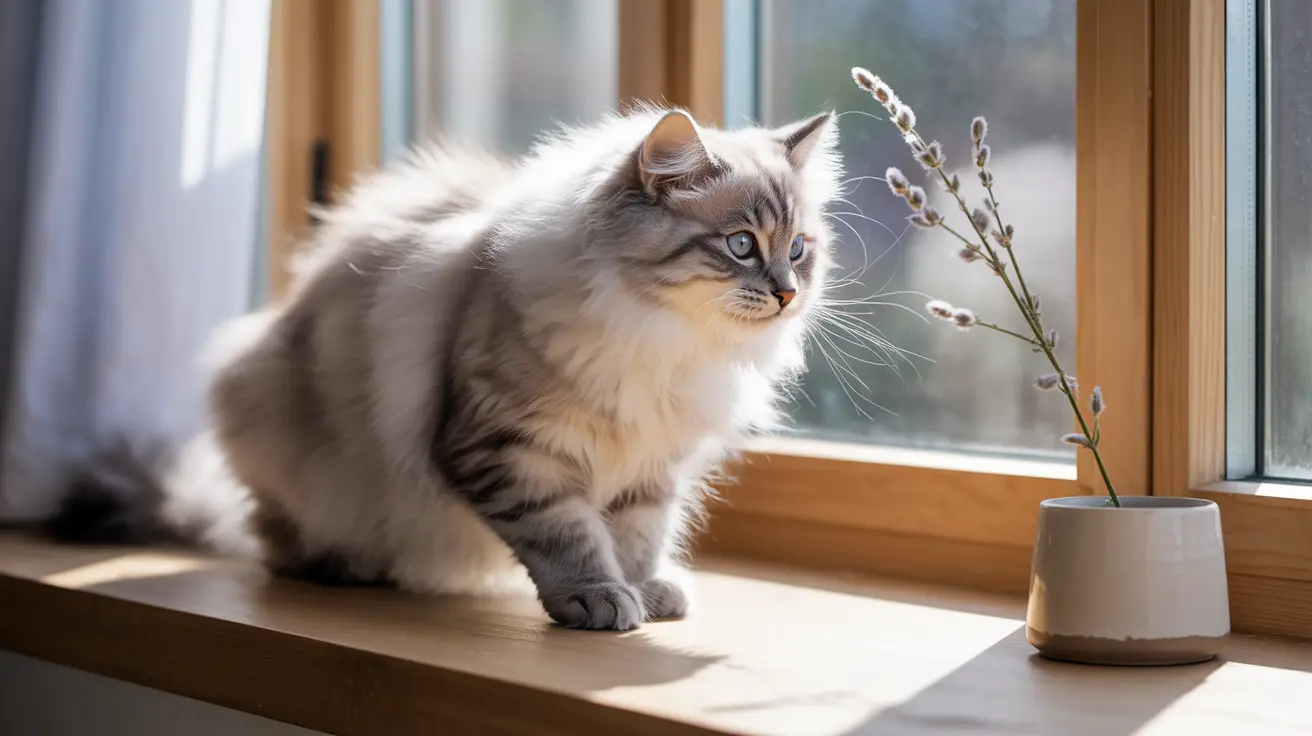Understanding Pussy Willows and Their Impact on Cats
As spring approaches, many households welcome the soft, fuzzy catkins of pussy willows into their homes. However, cat owners often wonder about the safety of these popular decorative plants around their feline companions. Let's explore the relationship between pussy willows and cats, focusing on safety concerns and what you need to know as a responsible pet owner.
While pussy willows aren't considered highly toxic to cats, there are important factors to consider regarding their presence in your home. Understanding these aspects can help you make informed decisions about incorporating these springtime favorites into your decor while keeping your feline friends safe.
The Safety Profile of Pussy Willows
Pussy willows, belonging to the Salix genus, contain a compound called salicin. When metabolized, salicin converts to salicylic acid – a substance similar to aspirin. While cats are generally not attracted to these plants, understanding their potential effects is crucial for pet safety.
The good news is that casual contact or minimal ingestion typically doesn't cause serious problems. However, consuming large quantities could potentially lead to health issues due to cats' sensitive metabolism of salicylates.
Potential Risks and Warning Signs
Symptoms to Watch For
If your cat does consume pussy willow plant material, be alert for these potential signs of distress:
- Mild gastrointestinal upset
- Vomiting
- Decreased appetite
- Lethargy
- Drooling
These symptoms are typically mild and self-limiting with small exposures. However, larger quantities may require veterinary attention.
Prevention and Safe Plant Management
The best approach to pussy willow safety is prevention. Consider these practical tips:
- Place pussy willow arrangements in areas your cat can't access
- Use deterrent sprays around plant areas
- Monitor your cat's behavior around new plants
- Consider artificial alternatives for seasonal decoration
Living Safely with Both Cats and Pussy Willows
It's entirely possible to enjoy pussy willows while keeping your cats safe. The key is moderation and careful placement. Many cat owners successfully maintain these plants by creating designated pet-free zones or using elevated displays out of their cats' reach.
Frequently Asked Questions
Are pussy willows poisonous to cats if they chew or nibble on them?
Small amounts of pussy willow typically aren't seriously poisonous to cats, though they may cause mild stomach upset. However, large quantities should be avoided due to the presence of salicin.
What symptoms should I watch for if my cat eats part of a pussy willow?
Watch for signs of gastrointestinal upset, including vomiting, decreased appetite, and lethargy. Most cases are mild, but contact your vet if symptoms persist or worsen.
How much pussy willow is dangerous for cats to ingest?
While a small nibble typically isn't dangerous, consuming large quantities could lead to salicylate toxicity. There's no exact "safe" amount, so it's best to prevent any ingestion.
Can salicin in pussy willows harm my cat, and how is it related to aspirin toxicity?
Salicin converts to salicylic acid in the body, similar to aspirin. Cats are sensitive to salicylates due to their limited ability to metabolize these compounds, which is why large amounts can be harmful.
What are the best ways to keep my cat safe around pussy willow plants at home?
Keep pussy willows out of your cat's reach, use deterrent sprays, consider artificial alternatives, and supervise your cat when introducing new plants to your home. If you notice any concerning behavior or symptoms, consult your veterinarian.
Conclusion
While pussy willows aren't highly toxic to cats, responsible pet ownership means taking precautions to prevent potential problems. By understanding the risks and implementing proper safety measures, you can enjoy these beautiful spring decorations while keeping your feline family members safe and healthy.






